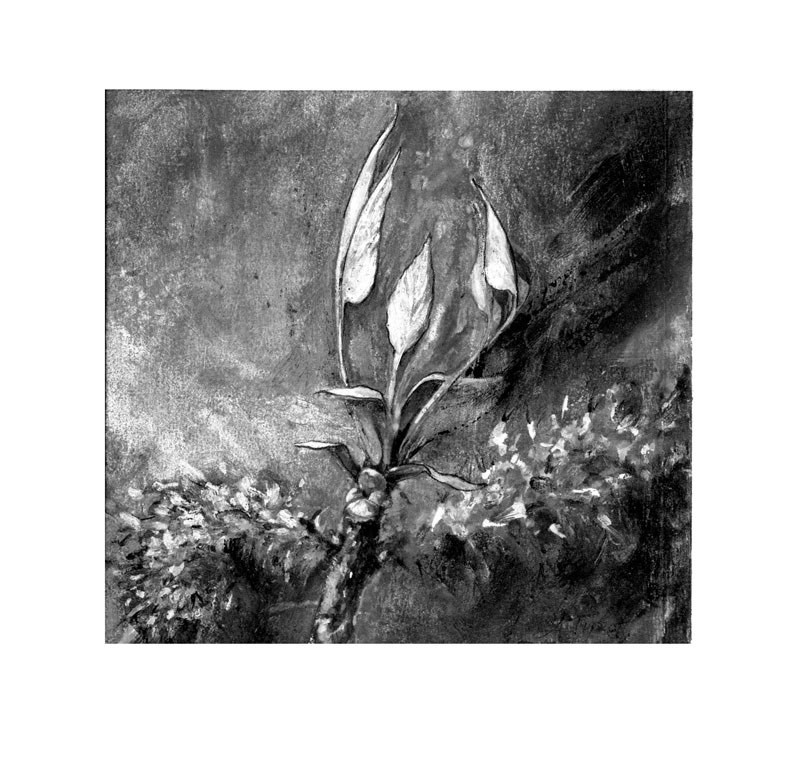
With the sun finally warming the land, the buds have awakened are doing their things again. Filled with promise, they burst forth, tender leaf tips lengthening and flowers unfolding.
In my mind, few configurations in the living world are more elegant than a bud. Not long ago, in early April, I broke off a branch from a sugar maple to examine the tree’s buds. Compact and symmetrical, each was enclosed by overlapping scales, a perfect package.
Formed and tightly wrapped by November, buds of all kinds enter cold storage during winter. And now in early May they are nature’s joyful sign of rebirth.
Curious about buds of every sort, not just maples, I snapped off twigs from various plants along the tree line, aware I was destroying incipient growth. With all this new growth of spring, however, the loss was hardly noticeable.
I brought the twigs indoors to inspect under a hand-held magnifier, and later with a microscope. Peering at one kind of bud after the next, I found their details differed greatly, but each was wonderful in its own right. Covering each bud were scales – modified leaves – that served as protective enclosures. Scales varied in number and symmetry with each species, as some plants produced buds with only one scale, while others displayed multiple scales. Most leaf buds remained tightly wrapped in that early-April inspection, but even then I found a few from plants that, rushing the season, had partly opened, exposing their green embryonic interior.
I examined the small sugar maple branch and noted the single large bud at the end of the twig, a special terminal arrangement poised for stem elongation. I also noted the somewhat different smaller lateral leaf and flower buds arising along the sides of the stem. Every lateral leaf bud on a given branch of a particular plant species has an identical design, a reminder that one can identify a tree in mid-winter, without the help of leaves, by inspecting the buds alone.
All these buds have been awaiting their springtime wake-up call. The recent warmer temperatures have triggered the growth systems that had shut down last autumn. As daylight hours shortened last fall, newly formed tree buds entered winter dormancy. Many trees and other plants in our temperate zone require certain low temperatures in late season to activate their biological clocks that will eventually awaken them at a certain time each spring—weather co-operating, of course.
Through the lens I further inspected the bud scales, which despite their kinship with leaves were brown or gray, not green. And they were tough, because they are meant to protect. What do they guard against? Not extremely cold temperatures as botanists once supposed; rather they guard against water loss and physical injury. Scales, however, are not good at safeguarding against hungry squirrels or birds. The delicate inner tissues are just too nutritious to be resisted.
After peeling away a few bud scales, I looked through the microscope lens to find a circlet of dainty, light-green, pleated, crinkled filaments, each bearing the imprint of the leaf it would become. And buried even deeper in the center of the bud was the plant tissue known as the meristem, which consists of undifferentiated cells that, similar to human stem cells, are poised to assume more specialized roles. The meristem tissue would soon elongate to produce new stems, leaves or flowers as directed by a plant’s hormones and genetic blueprint.
Each bud, then, is an autonomous unit, its inner meristem functioning independently from other buds and the rest of the tree. Yet because they are genetically identical and possess the same plant hormones, they all burst forth simultaneously.
You wake up one day in mid-spring to see a tree reddened and greened as leaves peep forth from newly elongated stems. Brief-lived inflorescences appear next on many trees well in advance of many spring wildflowers. Each day thereafter trees and shrubs surge toward the splendor of summer, when everything is full green but perhaps less exciting.

